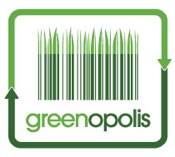Fat is Back in Fashion...as Fuel!
Waste Oil into Biodiesel for Cars, Tractors, Trucks and Home Heating
Fat is Back in Fashion...as Fuel!
Fat burns, literally. Now before you run off and take the propane torch to that beer gut or those cute love handles of yours, wait just a second. It‘s got to be processed into fuel first. Sometimes it’s simple. Olive oil, right from the bottle, can light a simple wick lamp.
Biodiesel requires a little more processing, but it can be made from virtually any kid of fat, including used cooking oil, oils past their expiration date, oil from animal fats, even oils from algae grown in sewage- a real waste to resources story. I suppose you could collect fat from liposuction clinics and literally burn off the pounds as you drive down the road, but that’s too gross to even think about. Sorry I mentioned it.
Rudolf Diesel’s first model engine ran on nothing but peanut oil during its first demonstration on August 10, 1893. Most biodiesel available commercially in the US comes from canola or soybeans, although biodiesel from chicken fat and fish oils is being made.
Algae is the most promising in the long term, as it can utilize other wastes to grow it, doesn’t divert food into fuel, or take up valuable farmland.
For local usage, waste vegetable oil like Yellow Brand is a good bet. I run my John Deere 1050 tractor on 100% Yellow Brand in the warm months, and a 20/80 blend with conventional diesel in the cold season. Both are significantly less polluting and the local 100% biodiesel adds no net carbon in its use. I can sit there and smell just a slight a sweet aroma from the exhaust when I mow my fields on a warm fall day.
I also pestered my local oil company about carrying a biodiesel blend for home heating oil, and talked them into including me on their route when it became available. It’s just a 5% biodiesel blend, but that 5% makes a much cleaner burning fuel all around. If you use oil for home heating, see if a local dealer can supply you with a bioblend.
Yellow Brand also has a heater that we saw at the Garlic and Arts Festival that will run on straight vegetable oil. The heater is partly made form reclaimed materials to boot.
Not all biodiesels are created equal, though. Some commercial biodiesel production uses food crops that drive prices up, or destroys habitat like palm oil plantations that are endangering orangutans in Indonesia and other places. Local biodiesel from waste oil or from non food crops are best. Try to get it as locally produced as possible- shipping creates more waste and emissions. Make sure you aren’t creating more problems than you are solving.
You can make your own biodiesel in your basement, kitchen or garage if you are inclined to do so, from your own used cooking oils or that old gallon of Mazola that smells a little off.
So “stick a sunflower in your tank” instead of a tiger. Biodiesel made from waste oil is one part of a renewable energy and waste to resources strategy. Then kick back and smell the French fries!
Greenopolis.com is dedicated to our users. We focus our attention on changing the world through recycling, waste-to-energy and conservation. We reward our users for their sustainable behaviors on our website, through our Greenopolis Tracking Stations and with curbside recycling programs.
GREENOP3897


